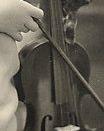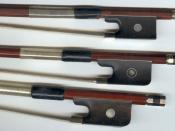Slow Movement from Haydn's 'Emperor' Quartet
OP. 76, NO. 3
The slow movement from Haydn's 'Emperor' Quartet is said to be one of Haydn's greatest works. He uses a simple yet classic melody throughout his piece that is the underlying feature of this movement. The melody is in the form AABCC but the movement itself is in the style of theme and variations. The music in the movement is played sweetly (dolce) and is in cut time.
The Introduction to Haydn's Emperor Quartet is in GM and has the violin 1 playing the melody. The cello and the Viola have similar rhythmic parts that are playing important harmonies to the violin 1 part. The second violin is harmonizing the melody.
Variation 1 is a duet between the two violins where the cello and the viola do not play. Violin 2 has the melody throughout the variation. Violin 1 is playing sets of semiquavers which give the different harmonies in this variation.
Most of the notes in the violin 1 part are in intervals of 3rds and 5ths or are in scale order. This variation is always soft (sempre piano).
In the next variation the bass instrument of the quartet has the melody (the cello). The violin 1 plays on the off beats for most of the variation with groups of semiquavers filled in as a small counter melody. Violin 2 is harmonizing between the melody and the violin 1 part. The viola is playing long notes every so often emphasizing the melody. Variation 2 is quite heavy and dense in harmonies and instruments in contrast to the first variation which was quite light.
In variation 3 the viola has the melody. Throughout this variation there are mostly three instruments playing at one time. The instrument that do not have the...


